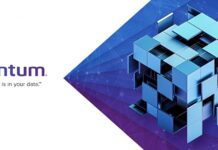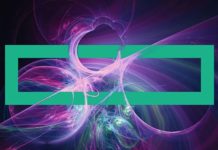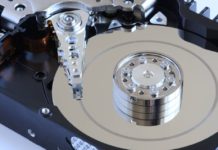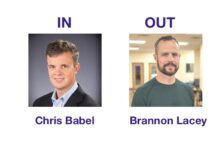Quantum has added two all-flash appliances to its deduping backup target product set.
The T10-60 and T210-120, in 1RU chassis, will replace the current DXi mid-range, according to an IT Press Tour briefing in March. Deduping backup appliances – aka purpose-built backup appliances (PBBA) – take in data from backup software products such as Veeam, Veritas, and Commvault. They deduplicate the backup data and store it for later recovery if needed – typically using disk storage because of its affordable capacity. But all-flash devices, using TLC (3bits/cell) or QLC (4bits/cell) flash, like the T-series, provide faster ingest and recovery.
Quantum says the T-Series is the industry’s first all-flash target backup appliance. It’s designed for edge deployments, small and medium businesses (SMBs), and mission-critical data storage infrastructure. The T-Series can also be used as the edge component in larger edge-core-cloud setups. There, the DXi 9000 is the core datacenter appliance.

Sanam Mittal, vice president, DXi engineering for Quantum, explained: “With continued improvements in density, cost, performance, and energy efficiency, QLC flash is the right choice for the next generation of data protection, especially for mission-critical relational and NoSQL databases, file systems and object stores that fuel data-intensive workflows, data lakes and AI pipelines.
“With all-flash DXi T-Series backup appliances, our customers can more efficiently protect their data and quickly recover operations in the face of a widespread ransomware attack.”
Quantum claims the T-Series has ingest rates of up to 113TB per hour, providing up to 65x faster backup rates and up to 13x faster restore times compared to competing products based on hard disk drives. The T-Series accelerates data rehydration to speed up other workflows including test and dev for analytics and application development, e-discovery and compliance, and long-term archiving.
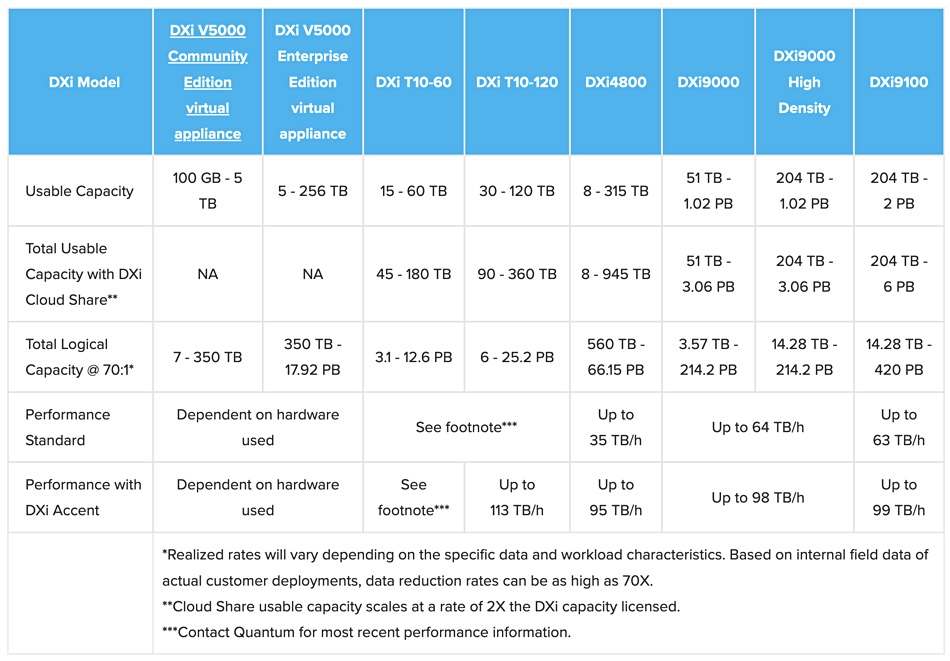
Competition
Dell is market leader with the PowerProtect DD (DataDomain) line. These use SAS nearline disk drives for backup dataset storage and can use an external FS25 shelf, filled with SSDs, for caching metadata.
HPE’s three StoreOnce products – the 3660, 5260, and 5660 – use SAS nearline disk drives for dataset storage and have SSD metadata caching as well.
ExaGrid’s two-tier, disk-based backup target appliance ingests data without deduping it, stores it for a while in native state in this landing zone, then dedupes it to backend storage. Restoration from the landing zone is faster than from the backend store as no rehydration from the deduped state is needed.
Veritas’s NetBackup Flex Appliances, the 5260 and 5360, are disk-based as well.

There are several all-flash arrays that have backup target configurations such as Pure Storage (FlashBlade//), Infinidat, and VAST Data. But these are generally high-end systems not geared to providing relatively simple and cost-effective dedicated backup dataset target functionality.
It seems likely that Dell will provide all-flash PowerProtect configurations in response to the same needs for faster ingest and restore identified by Quantum. HPE, Veritas, and ExaGrid may well follow suit.
DXi T-Series backup appliances are planned for release in Q2 2024. Get a datasheet here.




